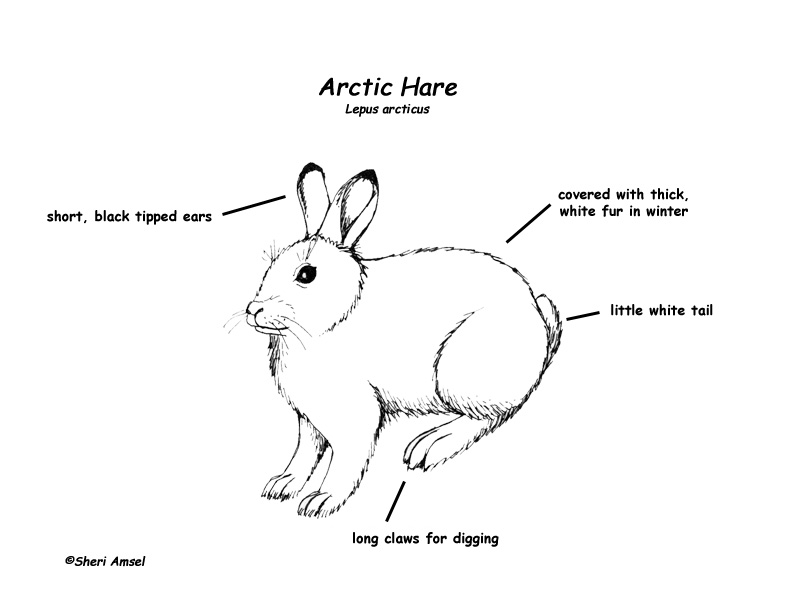

They are found in northern Canada.
They live out on the tundra, in rocky areas and in the mountains.
They are the fastest, largest hares in North America. They are grayish-brown with short, black-tipped ears. They turn white in winter (except for the black tips) to blend in. Furthest north, they stay white year round. They have long claws for digging in the snow to get to grass buried underneath.
They are active at night (nocturnal). They gather to feed in groups of up to 60 hares.
They eat twigs, roots, tough, green sedges, moss and berries.
They are hunted by wolves, lynx and fox.
Males fight over females by hitting each other with their front feet (boxing). Females are pregnant for about 7 weeks (gestation). They have 2-8 babies hidden in bushes or rocks. Babies very quickly (within just a day or two) know to keep still and blend in to hide from predators.
They live about 2 years in the wild. They are listed as Lower Risk - least concern.
Kingdom: Animalia
Phylum: Chordata
Subphylum: Vertebrata
Class: Mammalia
Order: Lagomorpha
Family: Leporidae
Genus: Lepus
Species: Lepus arcticus
When you research information you must cite the reference. Citing for websites is different from citing from books, magazines and periodicals. The style of citing shown here is from the MLA Style Citations (Modern Language Association).
When citing a WEBSITE the general format is as follows.
Author Last Name, First Name(s). "Title: Subtitle of Part of Web Page, if appropriate." Title: Subtitle: Section of Page if appropriate. Sponsoring/Publishing Agency, If Given. Additional significant descriptive information. Date of Electronic Publication or other Date, such as Last Updated. Day Month Year of access < URL >.
Amsel, Sheri. "Hare (Arctic)" Exploring Nature Educational Resource ©2005-2024. December 16, 2024
< http://www.exploringnature.org/db/view/410 >

